Charlie & Bill Nutt
![]()
Charlie & Bill Nutt |
|
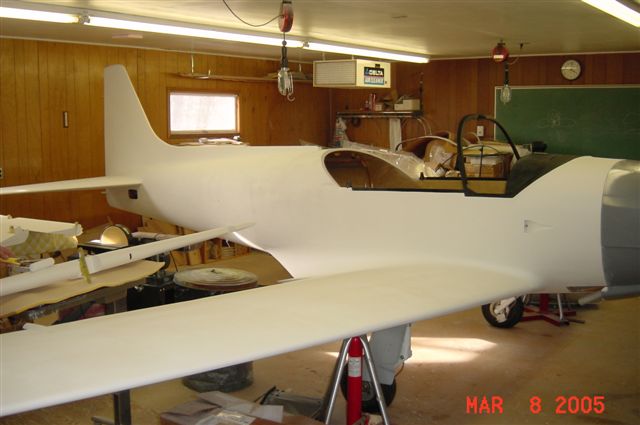
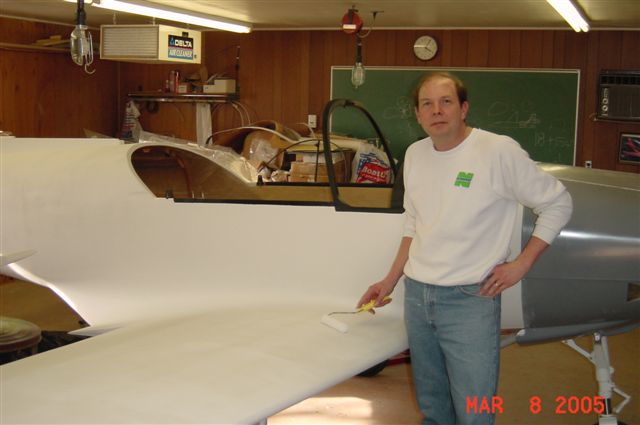
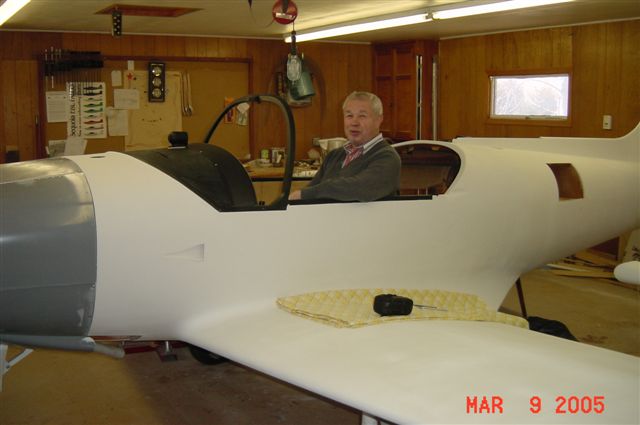
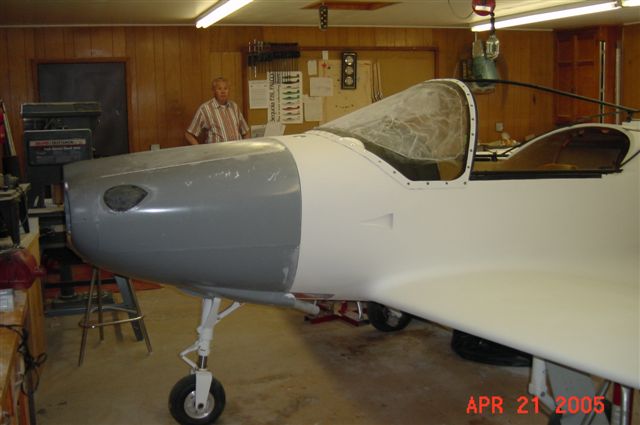
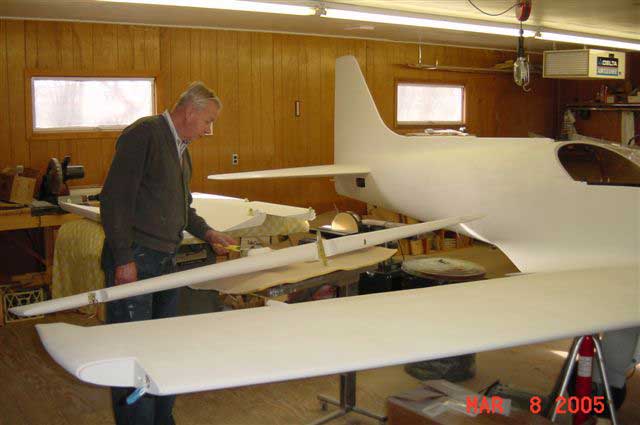
We used UV Smooth Prime for our base primer. Six coats rolled on, minimizing overspray and the resultant mess and prep required. It's designed for fiberglas with pinhole filling qualities and UV blocker, and supposed to be lighter than most primers, especially when rolled. We'll give it a good sanding, followed by a single coat of a primer compatible with our final paint. DuPont has a new line of Aviation Imron that just came out -- we're planning on using their base/clearcoat system. |
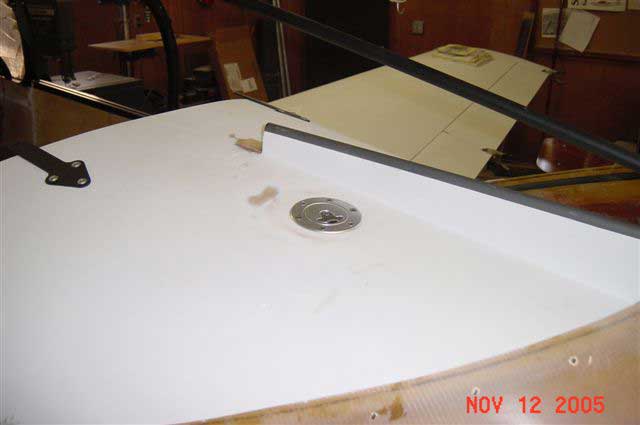
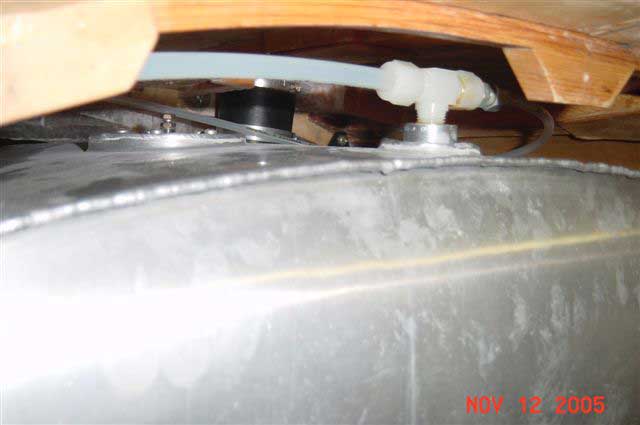
We used locking fuel caps for our front and rear tanks. The front tank cap is flush mounted into a bushing welded onto the front tank opening. The rear cap simply bolts down and is connected with a short piece of hose clamped to the tank and filler neck respectively. We'll ground the cap assembly through a 1 Megohm, 1 Watt resistor to prevent static electricity build-up when refueling. We think it looks nice and saves you from having to make a door for the front tank and makes for an easy way to seal both and keep water or fuel from getting into the airplane from around the filler openings. |
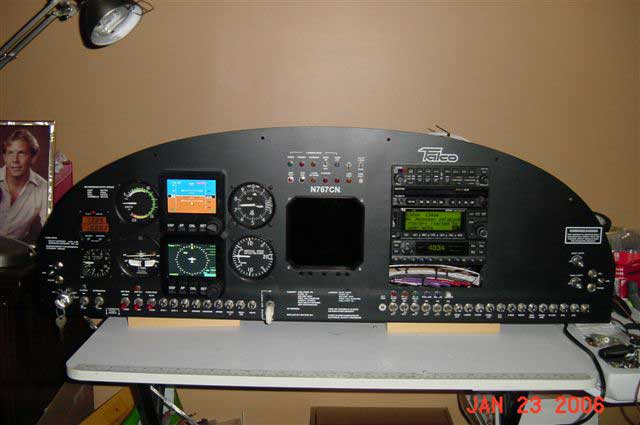
Here's a picture of our instrument panel -- almost finished. We tried to keep it simple and along the clean lines of the original design. The Blue Mountain EFIS Lite G3's are only 6.5" deep and provide ADI, HSI, and moving map along with an autopilot control head built in. We've also gone with a VM1000C color engine monitor and the radio stack has a GMA340 audio panel, SL30Nav/Com, GNC300XL GPS/Com, and GTX327 Transponder. A small secondary alternator and battery should provide plenty of redundancy while keeping the weight, cost and complexity down. |
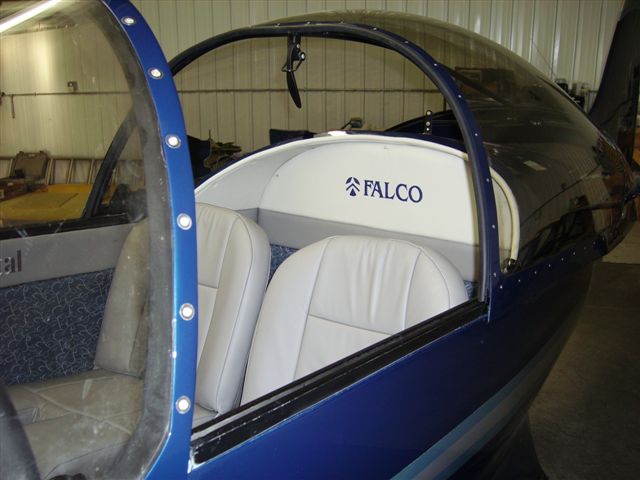
The interior |
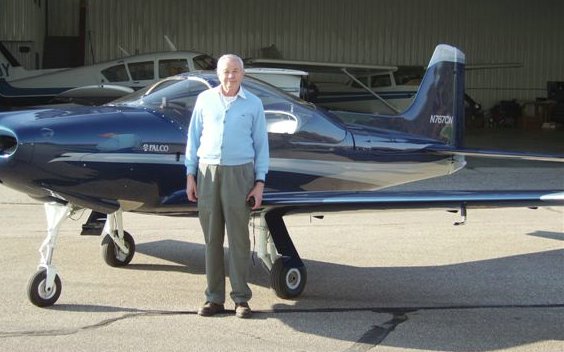
Charlie with the Falco at the airport |
|
|